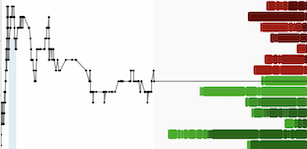Solar power is now the world's fastest-growing source of electricity. The International Energy Agency (IEA) forecasts that solar photovoltaic alone will account for 60% of the world's total renewable capacity additions through 2025. By 2050, it is forecast to become the world's largest source of electricity.
Not surprisingly, 2019 was the peak year for solar energy usage growth. In 2020, the industry, like the world economy, dragged the anchor of the COVID-19 pandemic. Solar power for generating electricity grew, but more slowly.
Now, 2021 is predicted to be a take-off year.
For example, 2020 residential installations in the US dropped by a quarter from Q1 to 617 megawatts (MW) in Q2, the lowest in a year. At utilities, 2.5GW were installed in Q2; this was almost three-fourths of all solar capacity brought online during that quarter.
Part of the reason was that the sector experienced minimal COVID-19 drag. And 8.7KW of new utility power-purchase agreements were announced in Q2 for a record contracted pipeline of 62 GW.
Despite some decline in all market segments, solar photovoltaic power (PV) accounted for 37% of all new U.S. electricity-generating growth in the first half of 2020.
Why the Solar Industry Needs Batteries
The marriage of the rapidly advancing installation of solar electricity generation with the burgeoning use of batteries is perhaps the single most significant development now in the field of solar energy.
One of the 2 dominant applications of solar power, rooftop installations linked arms with battery technology when Tesla announced it would include a battery with every solar installation.
Solar power does not require a battery. Of the two chief ways to use solar power, direct sunlight and solar thermal, which heat fluid as a middle step in generating electricity, solar direct is almost universal in rooftop installations.
The secret to the entire solar energy process (and to photovoltaic cells) is this simple: a photon, the basic unit of light, strikes a surface and releases an electron. The photoelectric effect.
The solar panel achieves this using the right surface material and semiconductors. No battery is required, but the electricity must be used immediately in the home or in the electric grid to which the home may be connected. This direct photoelectric effect is why solar produces no power at night.
The battery solves this problem by storing solar energy and releasing it as needed.
Read the Full Article here: https://articles.cruxinvestor.com/solar-power-by-2050



